La Mezquita. That is all.
It was a rainy day in Andalusia, so we took the train to Córdoba (still in Andalusia, so still raining) to experience La Mezquita. Experience may not be quite the word to describe the visit. Immerse, maybe. Stand agape. Ponder. Ruminate. Marvel at the ability of human beings to create and inspire.
Quick history lesson if you are not familiar with The Mezquita. It began as a Visigoth basilica in the 300s. It became a mosque when the Moors conquered southern Spain in the 700s. Until the 1200s, Córdoba was the largest city in the world. While most of Europe suffered through the dark ages, Córdoba thrived, boasting multiple libraries, paved streets, running water, and a culture that was tolerant of Islam, Christianity, and Judaism. (It happened once. It could happen again…) During this time, La Mezquita was expanded several times, always horizontally. Then there was a little incident we refer to as The Inquisition. During the Reconquering in the 1200s, La Mezquita was expanded–mostly vertically–to include Christian architecture and iconography. Fortunately, most of the Christian changes were additions and not demolish and replacements, so there is a wonderful mix of both to be experienced. There are even remains of the original Visigoth basilica under the floor and in some displays.
That glosses over some u-turns and and missteps along the way, so read more about it. Fascinating stuff.
Here are some pictures. Be warned that you will see lots of ceilings, arches, doorways and altars, mostly without comment because it’s still difficult to digest.
Note to Scott and. Cathy–on return to Seville we took a cab directly from the train to La Golondria. Mmmm…
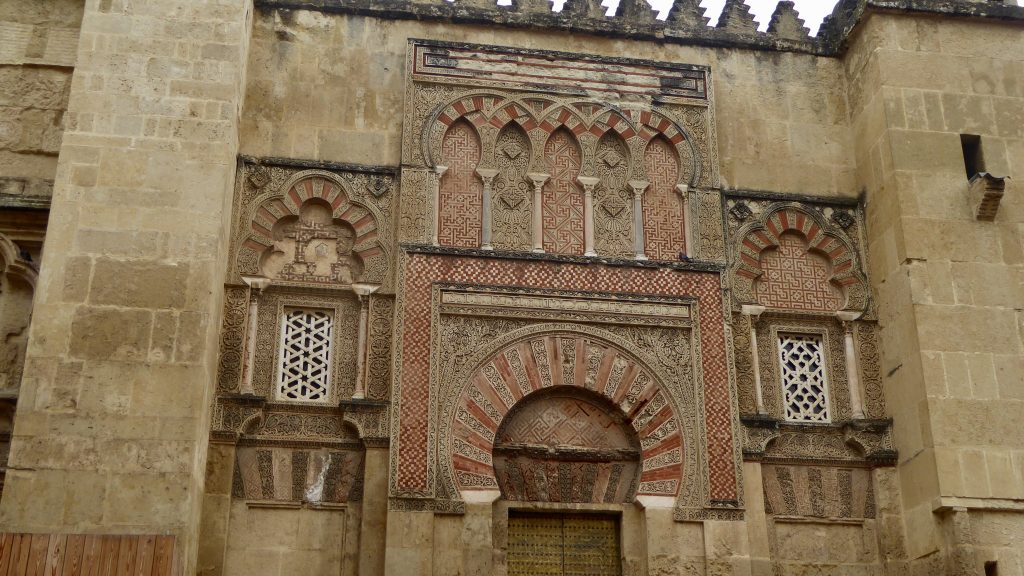
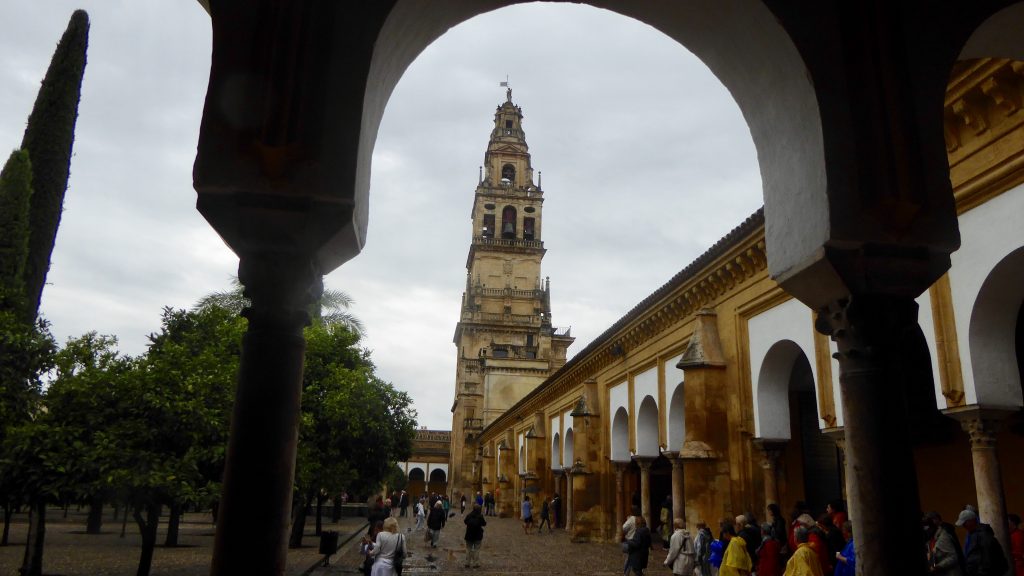
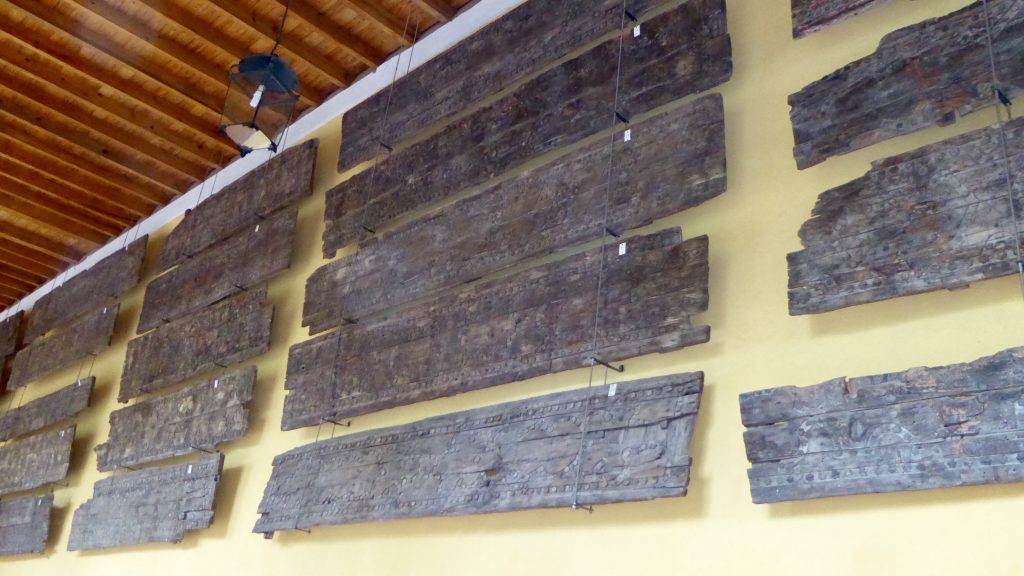
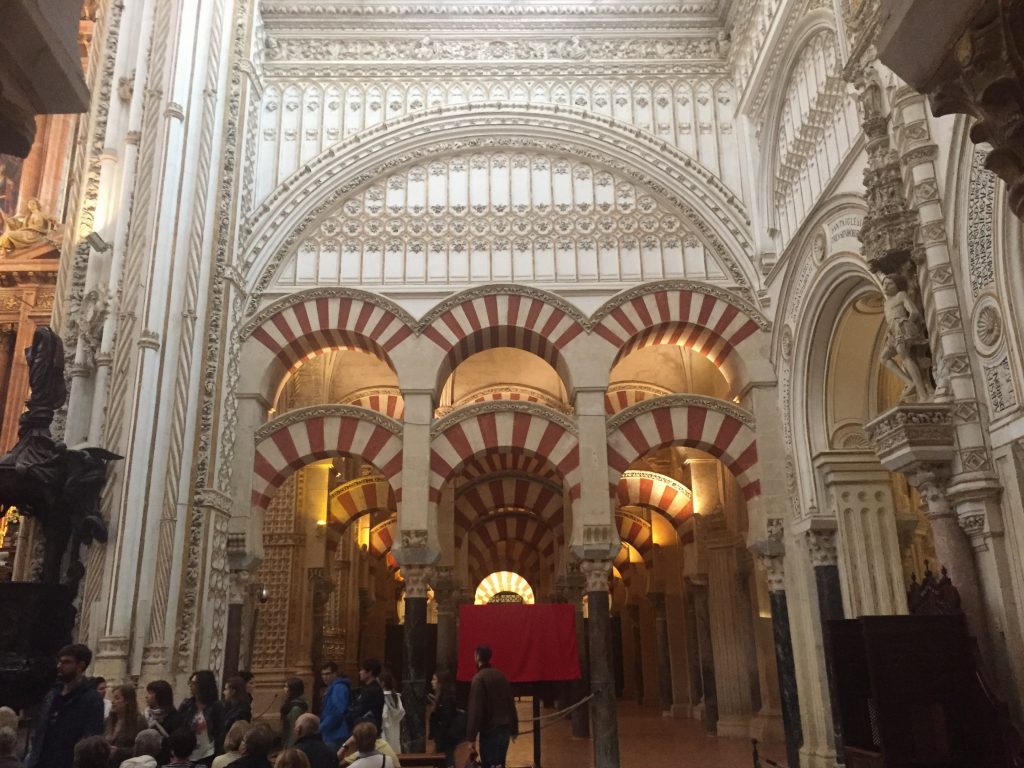
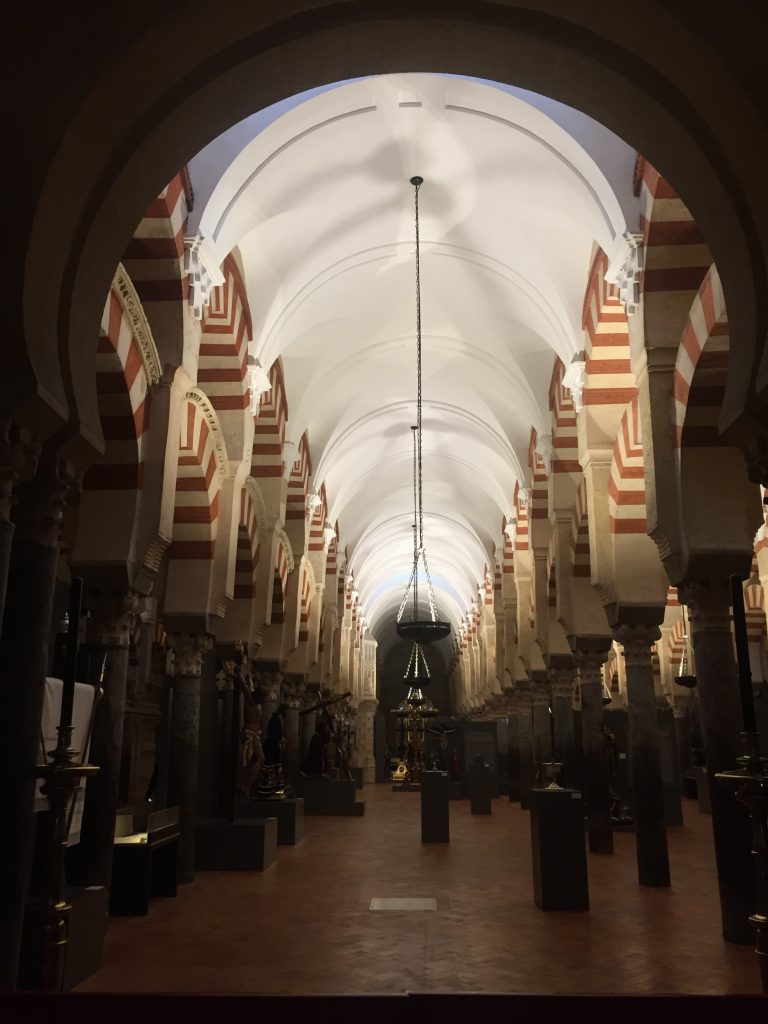
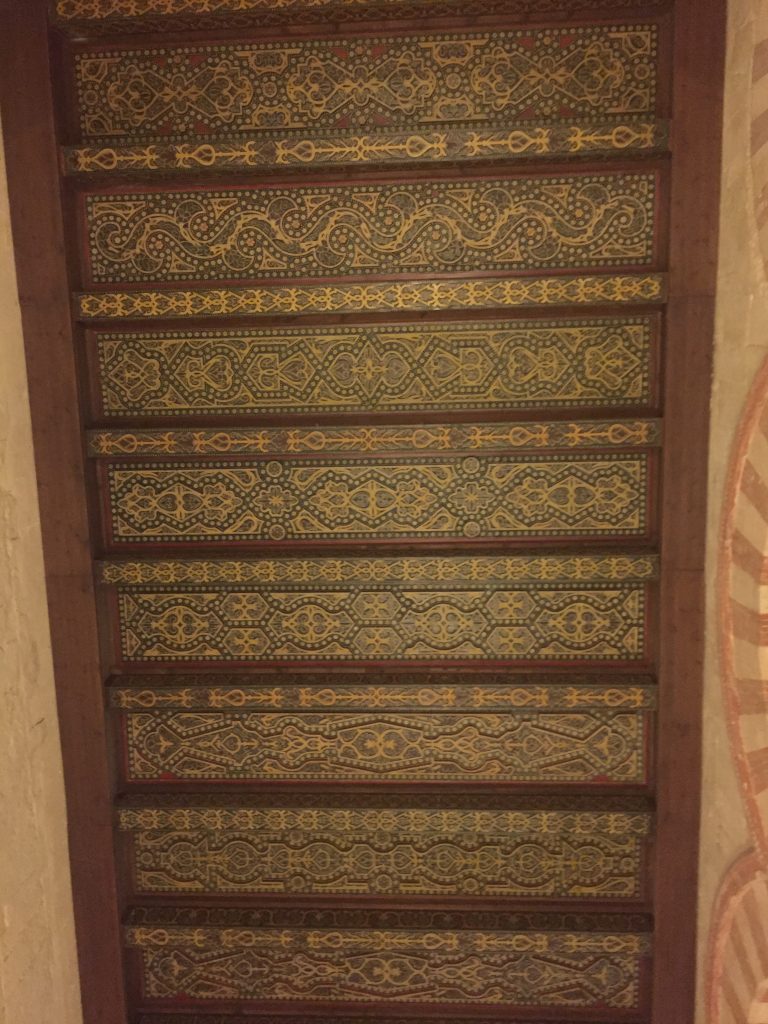
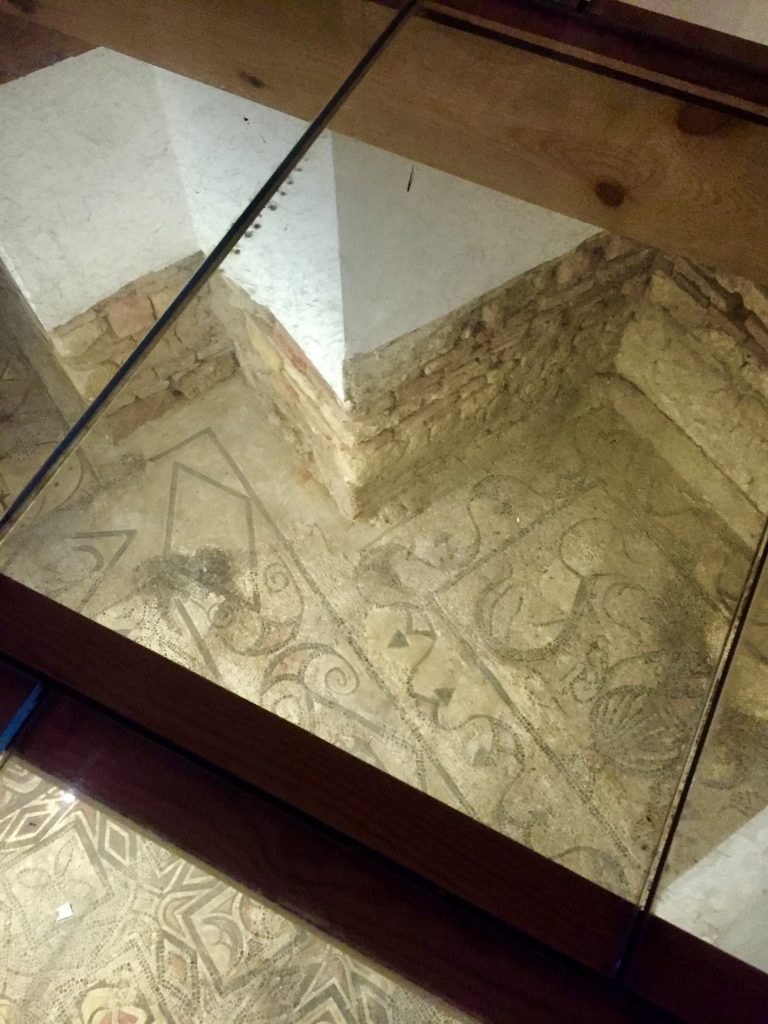
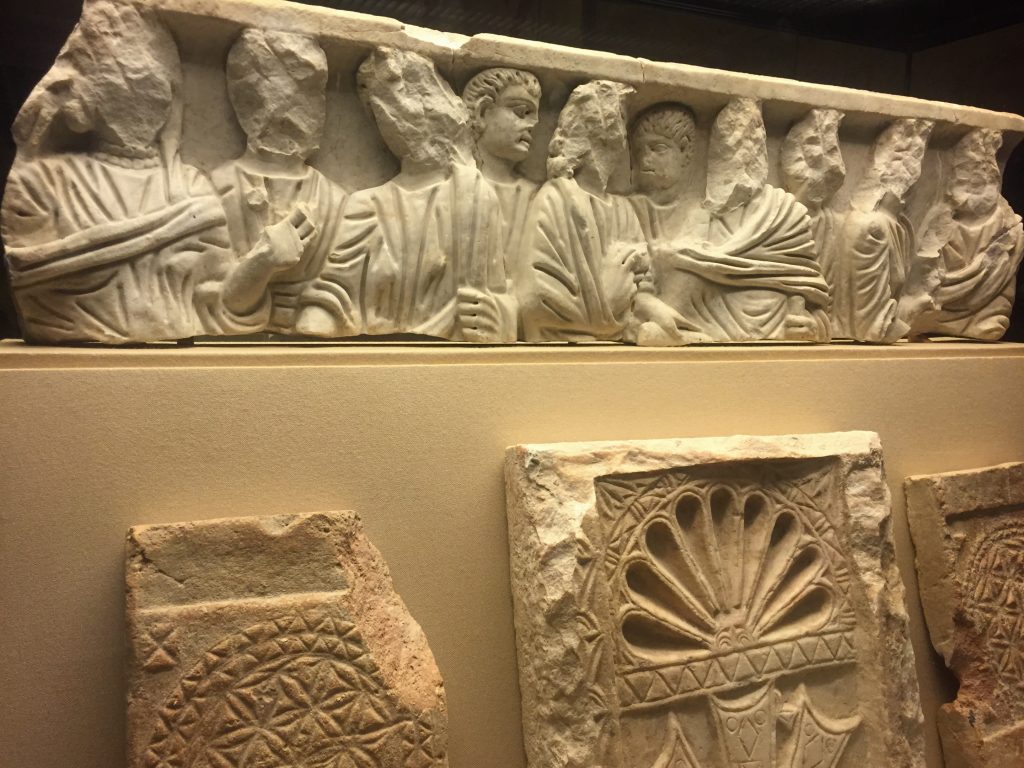
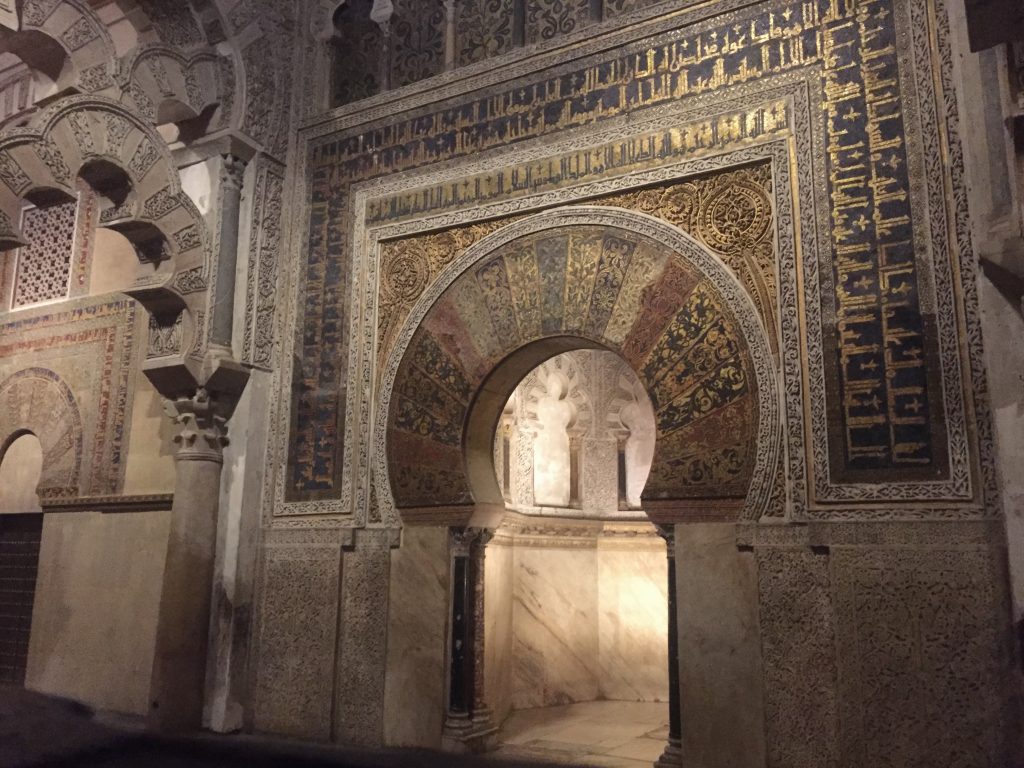
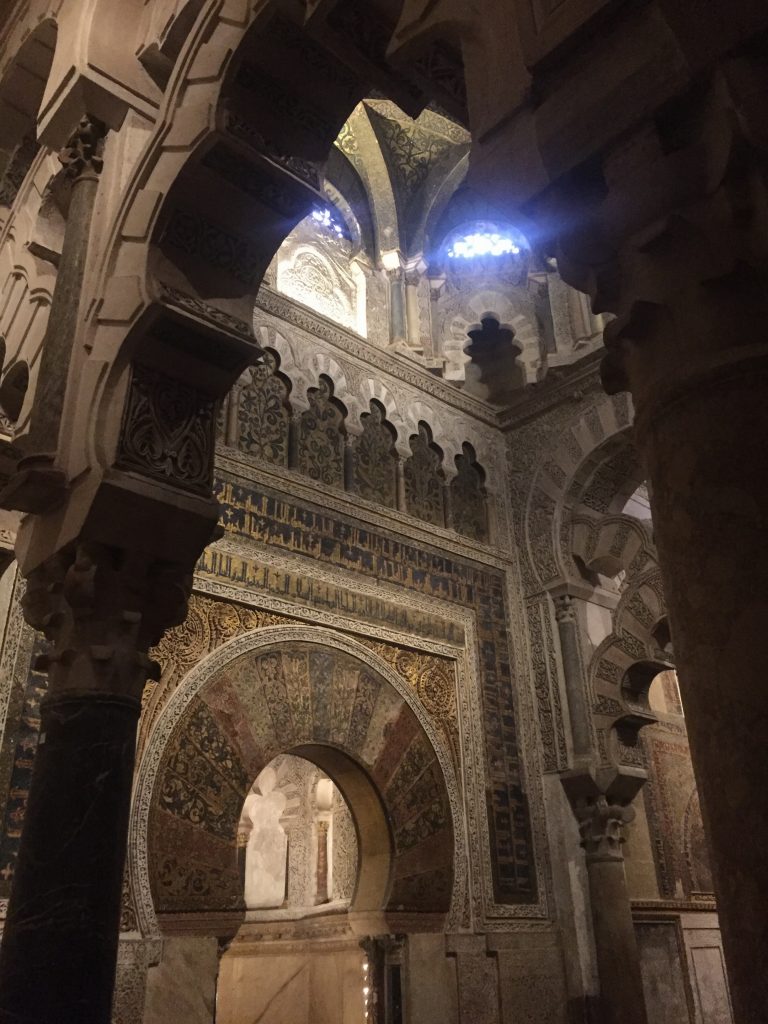
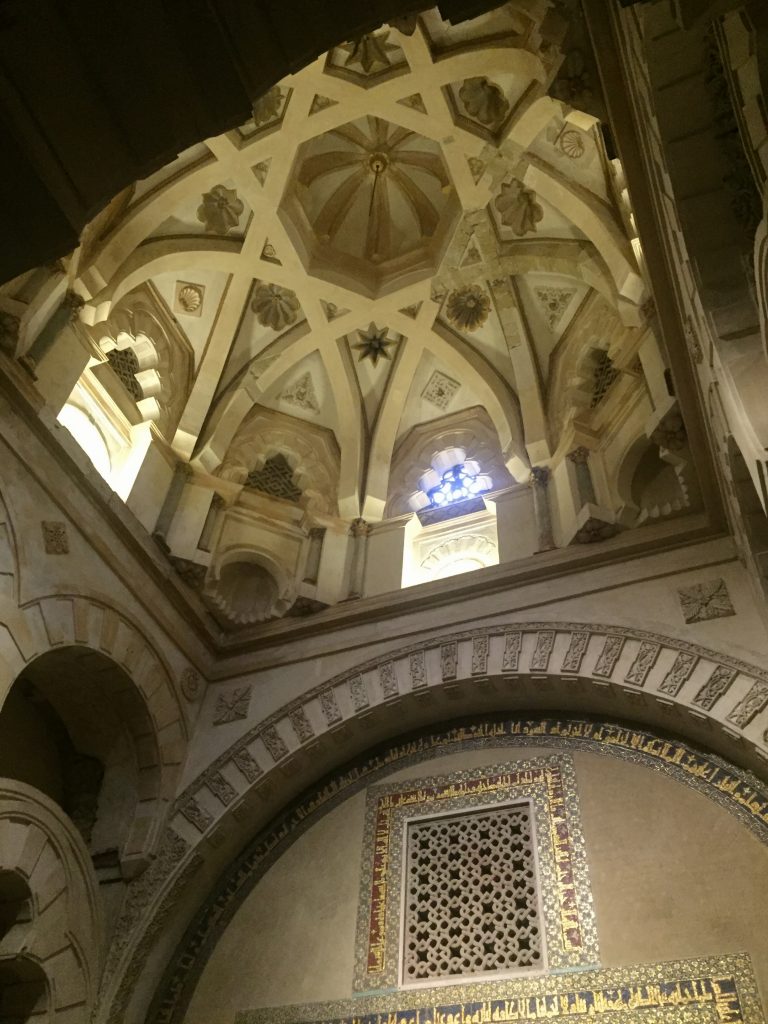
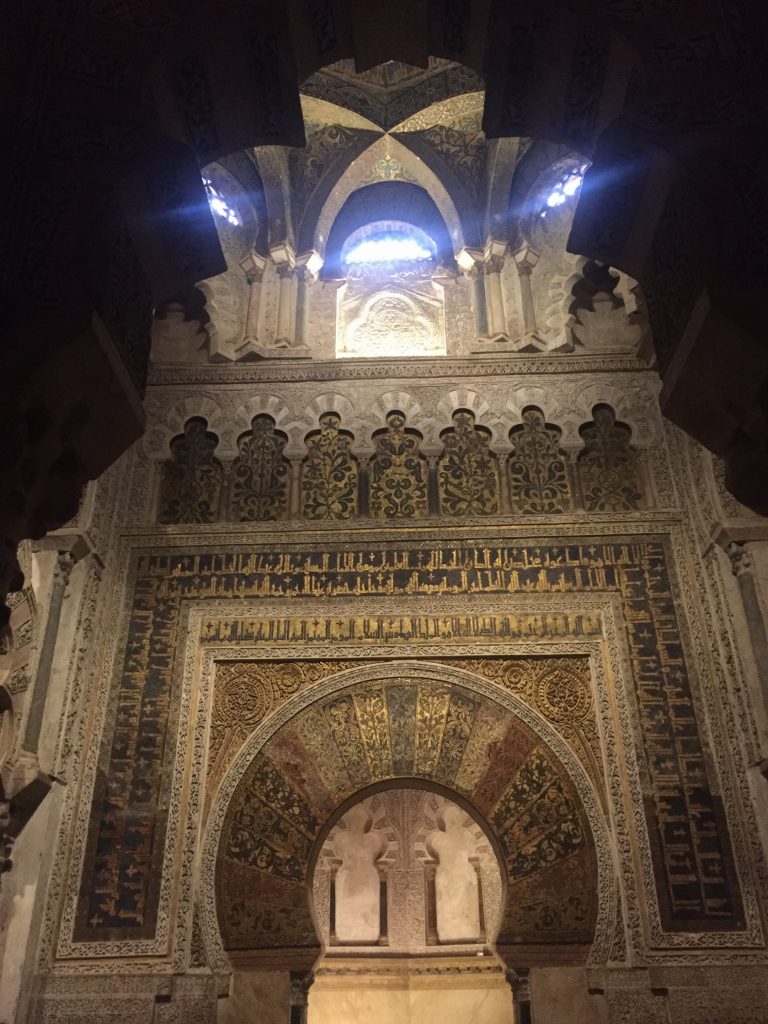
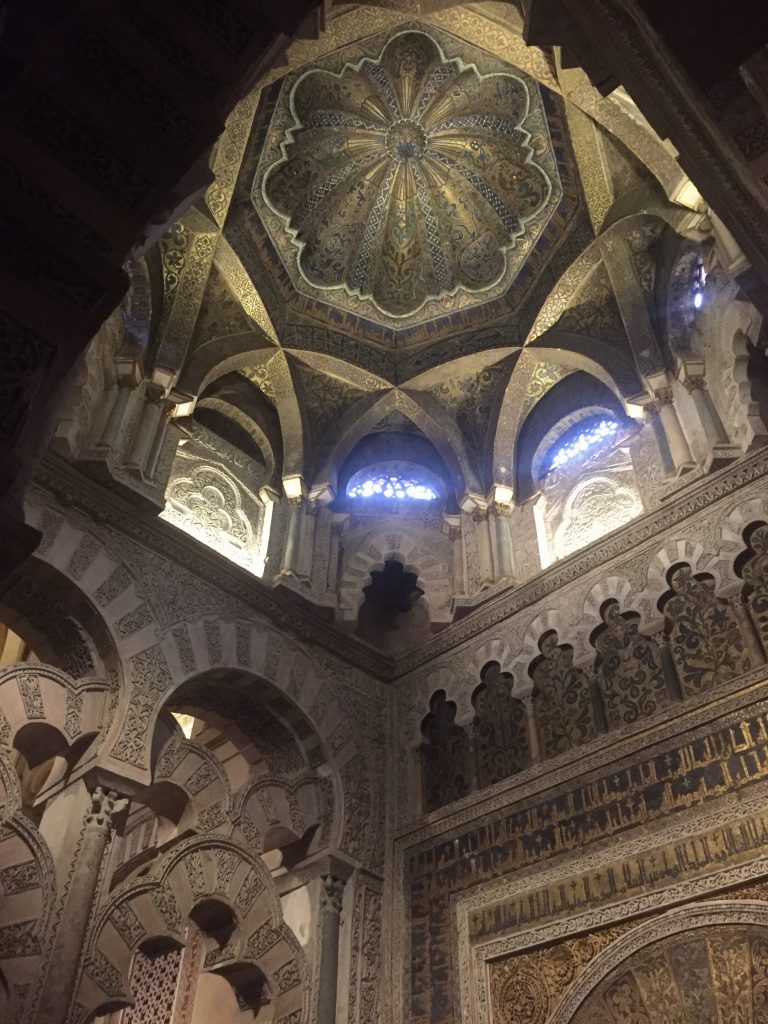
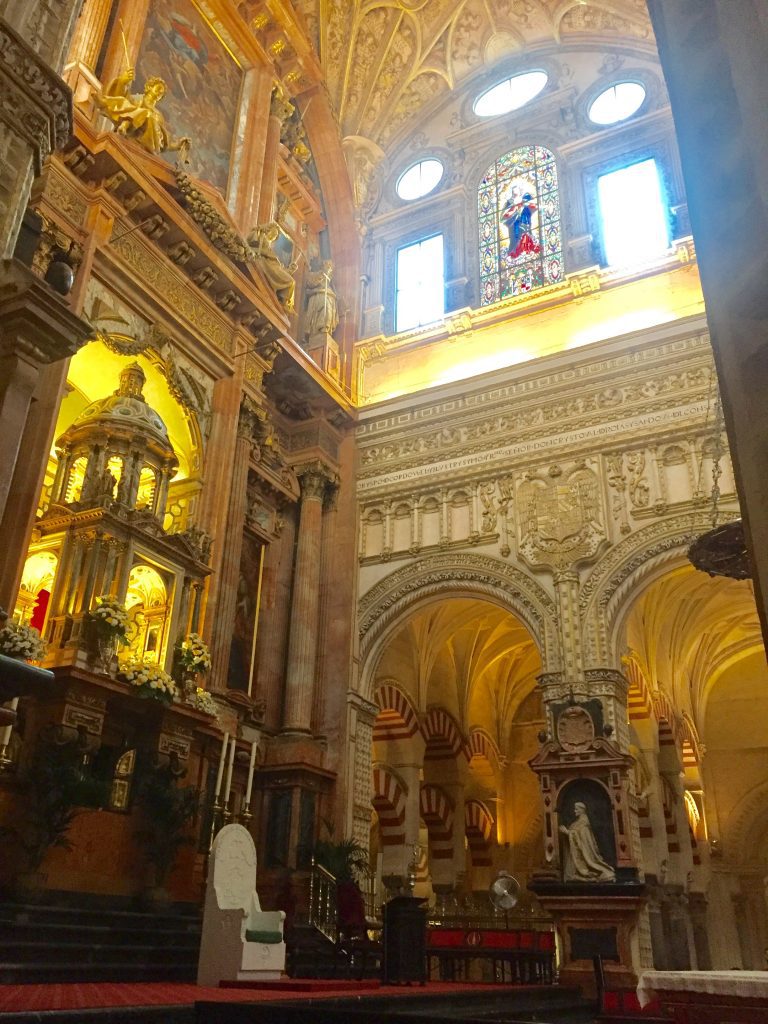
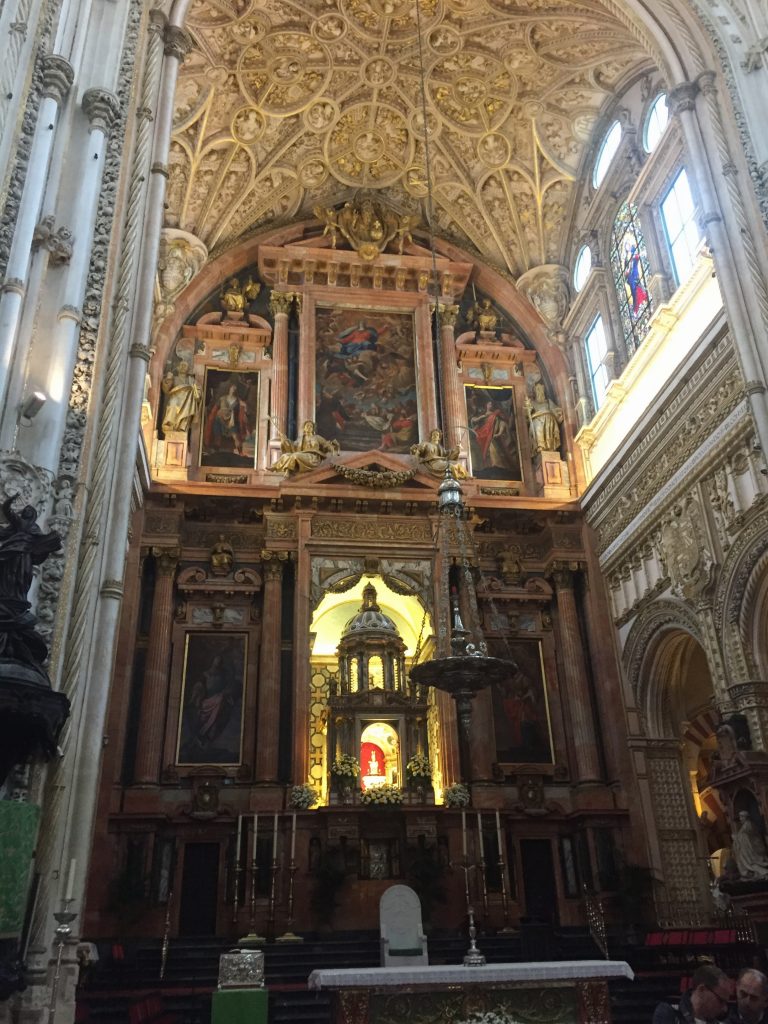
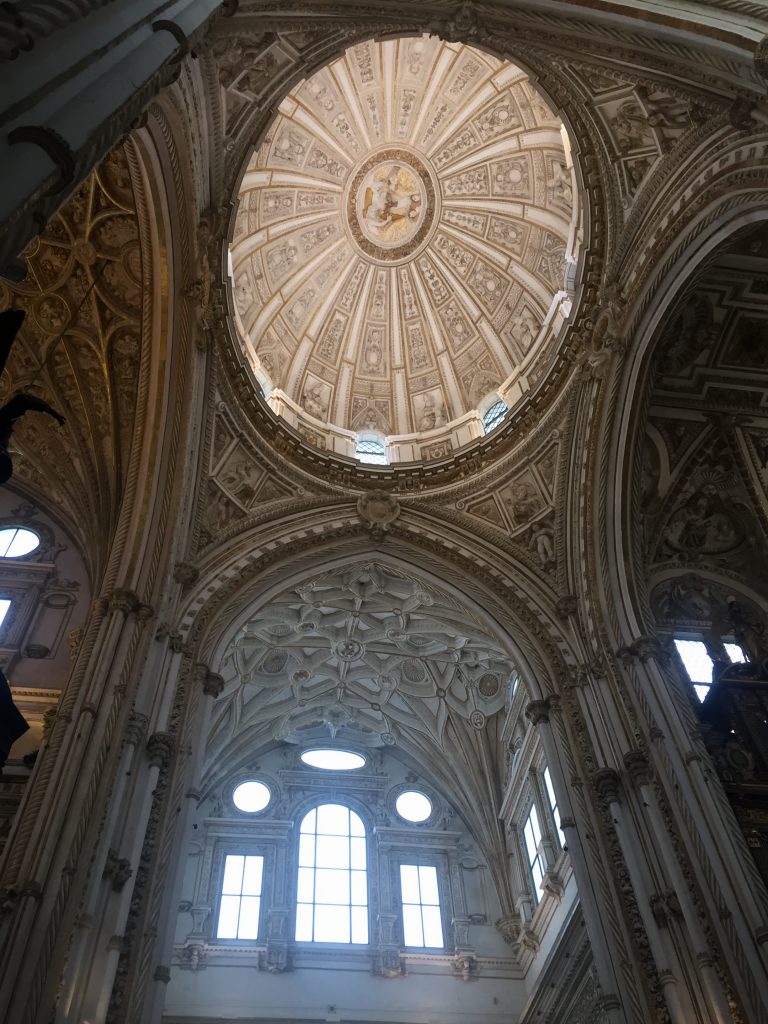
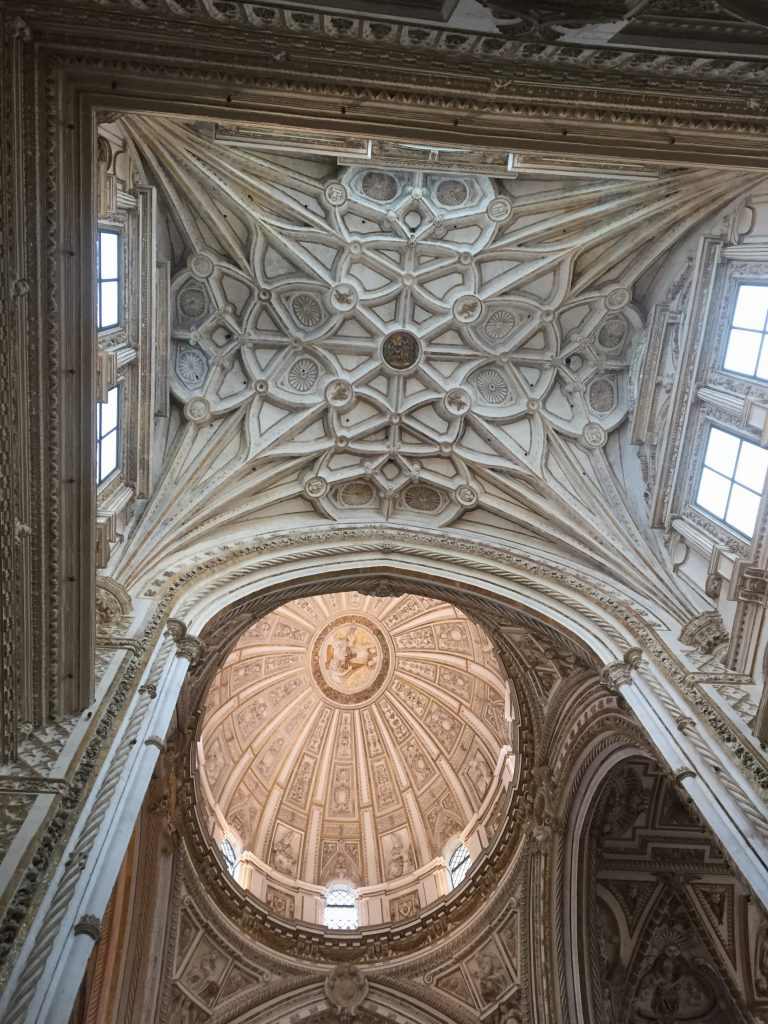
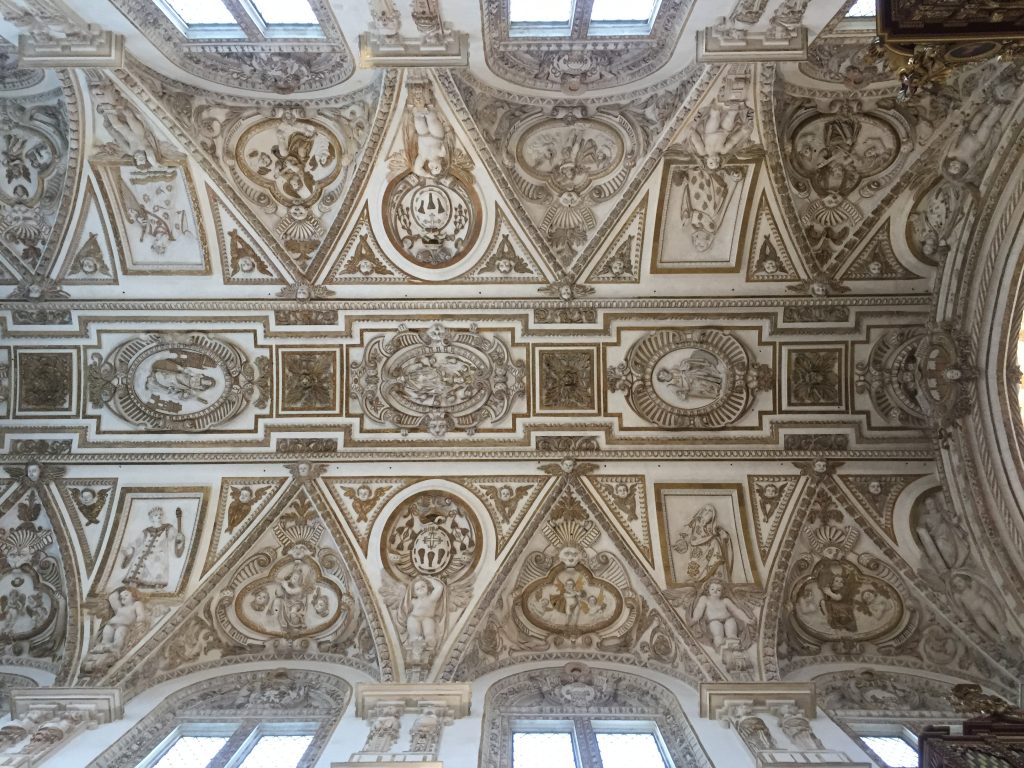
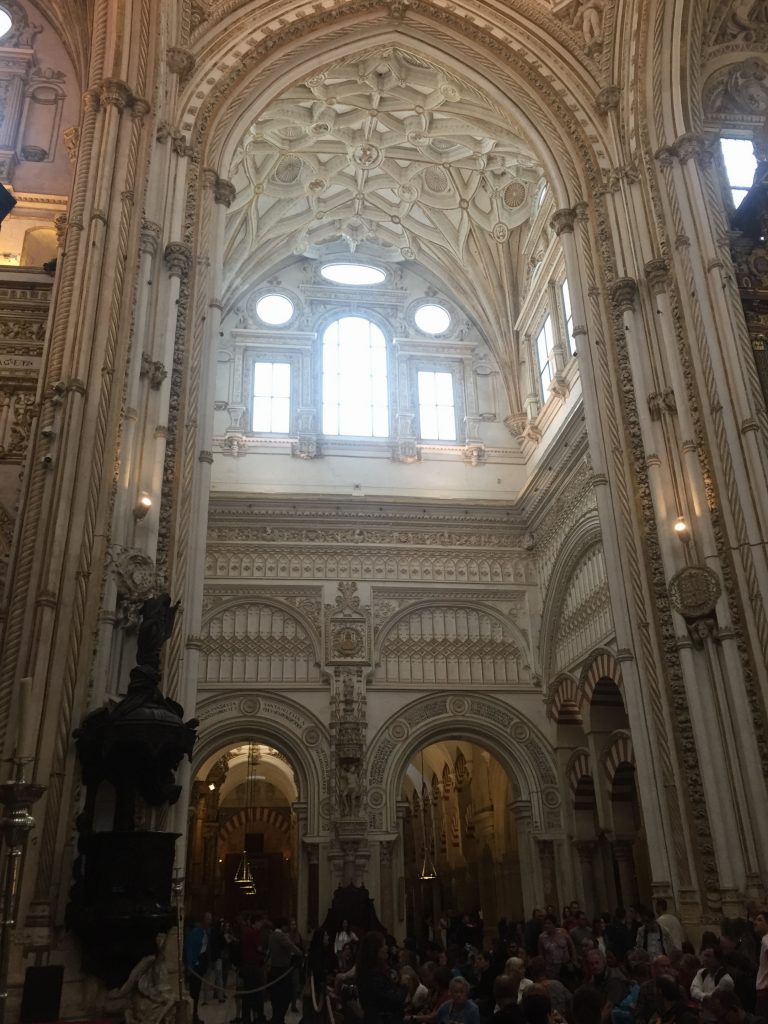
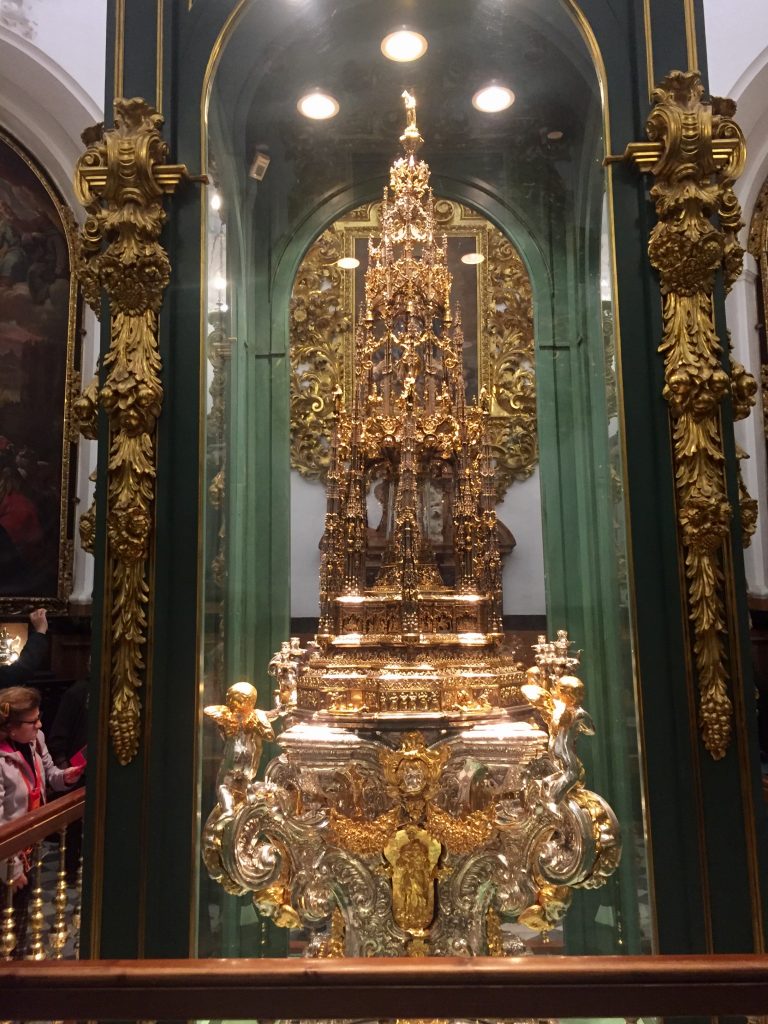
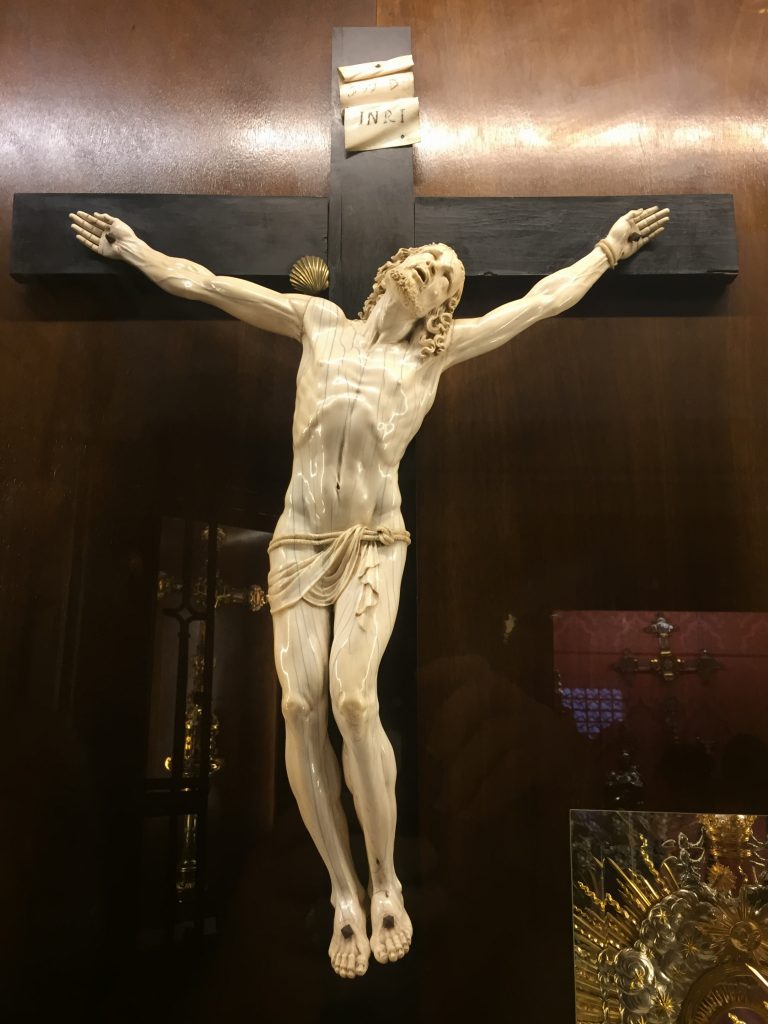
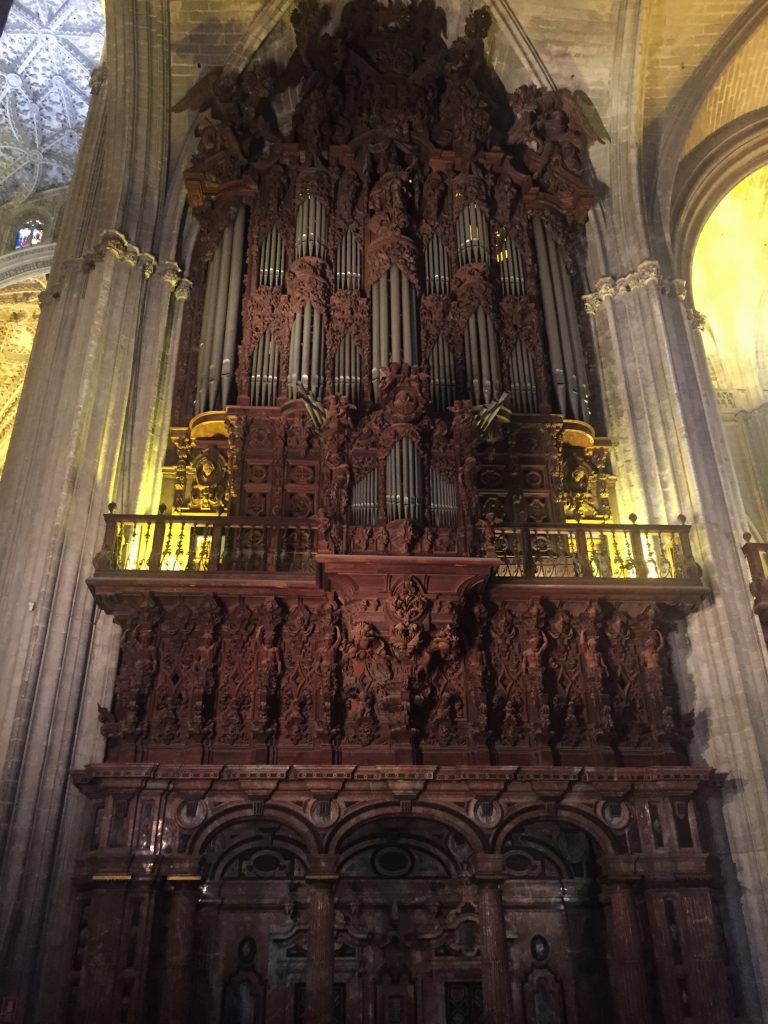
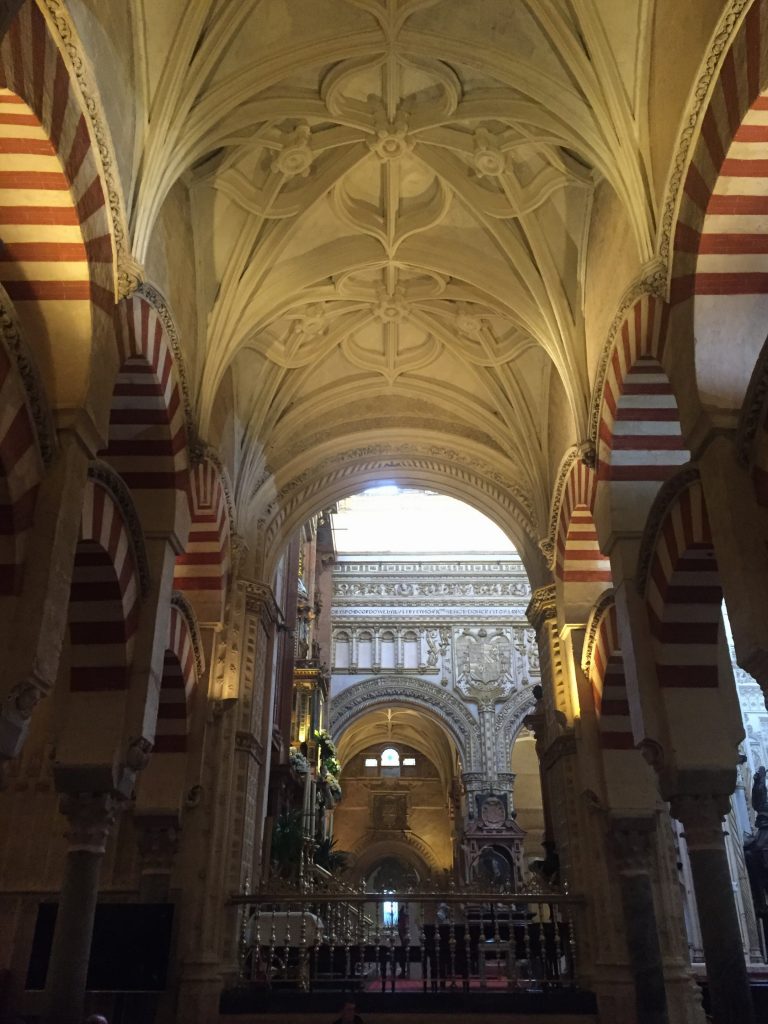
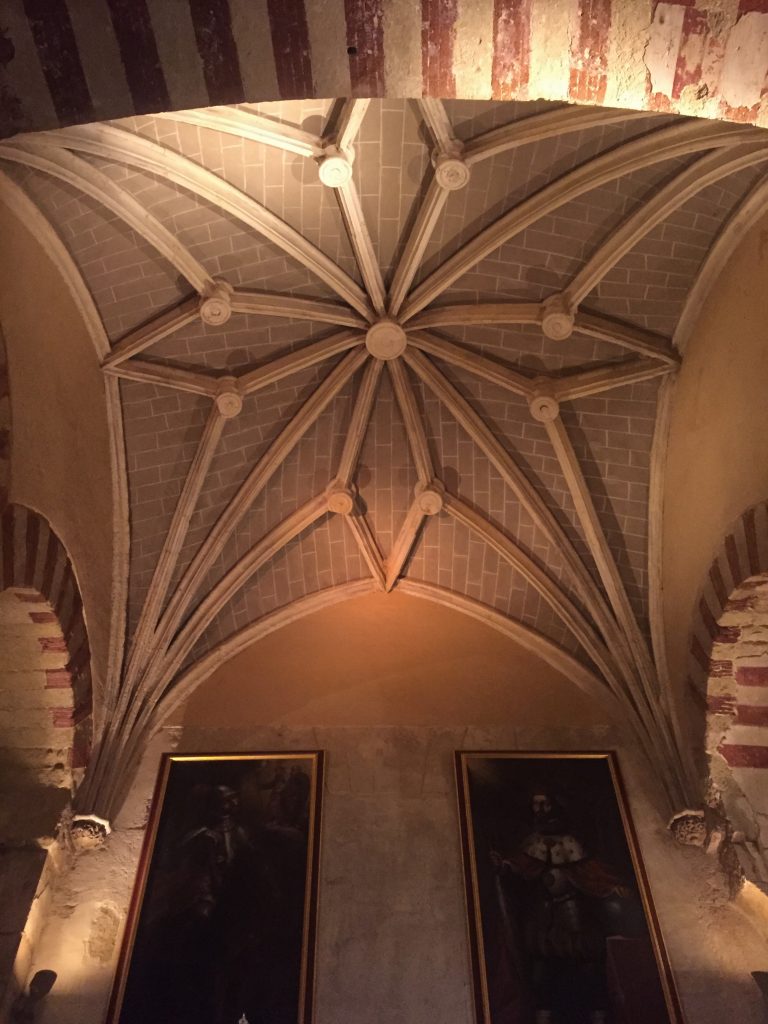
8 thoughts on “La Mezquita. That is all.”
Yep, this place was an eye-opener. What a concept: people of different religions could actually get along…
And Los Golondrinos was to your liking?!?! We were craving veggies by then, so the tapas with carrots, etc, were great!
Golondrinas was very good. Ditto on the craving for veggies, too. Tapas are wonderful, but they tend to be protein and bread. I’d love a good chef’s salad along about now.
We were equally blown away by the scope of this place. One of the largest single day image collections during our trip to Spain. Keep ’em coming!
Fun fact about the mihrab in Cordoba. It doesn’t actually face Mecca as is tradition. It faces the direction Mecca would be if the mosque was in Baghdad? I believe. It was a statement that from the Moors that they were actually caliphs in exile.
I like that much better than an alternate explanation I’ve heard put forward–that the Mihrab faces Gibraltar since you’d need to go there to get to Mecca.
On the Thursday of Semana Santa in 2007, I took the train to Cordoba, to escape the madness in Sevilla. Spent something like 3 or 4 hours in the Mezquita. No space before or since has ever affected me the way it did.
Beyond words, really.
I may start seeing my life as pre- and post-Mezquita. Very moving.
From all accounts, the same can be said for Al-hambra. Insanely jealous you’re going there and can’t wait to hear all about it!